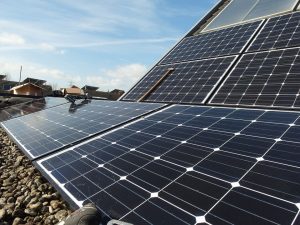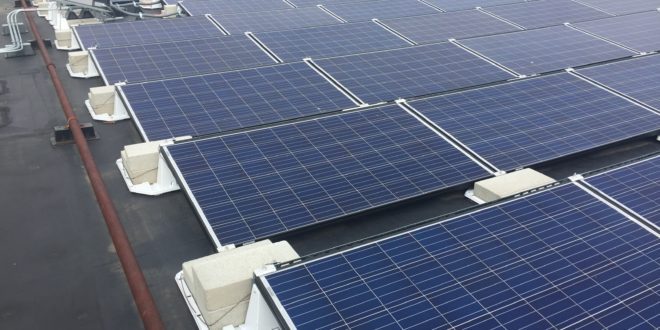
Despite some pushback from the Trump administration, there’s no stopping renewable energy. Renewables continue to surge, while U.S. coal production has dropped to its lowest level since 1978. Although initiatives to resuscitate a dying coal industry remain, such as Interior Secretary Ryan Zinke’s push for coal mining expansion, renewable energy isn’t going anywhere.
The abundant types of renewable energy, from solar and wind to geothermal — and their decreasing cost — have made renewables the default choice for many.
The year 2016 was a landmark for renewable energies. Germany powered the country on renewables for an entire day, while Portugal did so for four consecutive days. Elsewhere, the UK outputted more electricity via wind than coal, which marks the first time wind has outdone coal in a single year.
The case to be made for renewable energy’s surge is international, with a large enough sample size to be taken very seriously.
It’s also notable that renewable costs continue to fall, which is extremely appealing for industry providers and consumers alike. According to the Joint Institute of Strategic Energy Analysis (JISEA), wind costs are expected to drop by 29 percent and solar PV costs are expected to drop 44 percent.
A combination of growing worldwide interest and innovation seem poised to grow this sector even beyond its present impressive results. Job growth, innovation and accessibility are a few of the major benefits of renewable energy’s surge.
Benefits for Industry Providers
Global renewable energy’s upward trajectory has numerous benefits for industry providers:
- Improved Public Relations and Brand Image
While businesses whose practices damage the environment suffer extreme PR hardships, such as BP’s oil spill, there’s no real downside to showcasing environmental protection efforts.
A provider who specializes in renewable energy can use the multiple environmental benefits of renewables, which avoid the air and water pollution emitted from fossil fuels, to show they truly care about the world and its environment.
Wind, hydroelectric and solar energy have no associated harmful emissions, while wind and solar require no water to operate and consequently do not pollute water supplies. A sustainability strategy in marketing and brand outreach appeals particularly to younger generations who represent current and future customers to industry providers.
A Nielsen global study found millennials view sustainability as a priority when deciding who to do business with.
- Job Creation
Just as millennials view sustainability as a big factor when deciding who to do business with, the same applies when they’re seeking out jobs. A business with an emphasis on sustainability is likelier to attract more candidates for a position, providing the business with more options to fill positions. It’s a microcosm of global renewables’ job-creating benefits.
Just last year, renewable energy jobs surpassed oil drilling for the first time in U.S. history. Coal mining jobs, oil work and gas extraction careers continue to drop, while solar and other renewable fields grow at a steady rate.
Industry providers who embrace renewable energy show a savviness and compassion that appeals to younger generations whose education and acknowledgement of renewables’ more affordable output have made the embrace of it natural.
- Lower Operating Costs
Any business would jump at the chance to reduce operating costs. With renewable energy, a reduction in operating costs is very possible for businesses previously specializing in fossil fuels. Renewable energy can be rapidly deployed, unlike fossil fuels.
Meanwhile, the comparative costs of alternative and conventional energy will continue to grow in favor of alternative sources, especially as wind and solar costs continue to fall dramatically.
Onshore wind power experienced a 56% drop from 2009 to 2014 alone, contributing mostly to decreases in pricing of system components like racking, turbines, inverters and panels. These component drops coincide with future innovation to make operating costs for renewables significantly lower than conventional energies in the long-term.
Challenges Providers May Face
Renewables offer a variety of benefits for providers, but there are also a number of challenges they may face as well:
- Cost of Transition
It’s easier said than done to simply transition to renewable energy, especially for providers who have dealt in fossil fuels for years. Renewable energy itself has a number of benefits, though the primary challenge is often containing and utilizing this energy.
In many locations, undeveloped infrastructure is a big issue in transitioning. Renewable energy must be hosted at publicly acceptable sites with ample resources and transmission line access. Wind sites, specifically, need several years of monitoring and research to define suitability. Permits, installation, operation and maintenance of these sites provide additional costs that many businesses, new ones especially, may find too difficult to squeeze in.
- An Energy “Trough”
One area experts are concerned about in regard to transitioning is the inevitability of an energy “trough” due to a large-scale energy transition requiring extra demands for energy services that competes with other economic activity.
Providers themselves will not want to leave customers without energy so during the transition they will have to focus on both renewables and conventional energy. Otherwise, they will lose a substantial number of customers.
While a new provider could simply decide to go all-in with renewables, a pre-existing one with a customer base can struggle economically in the transition, straddling various types of energy without much economic co-existence.
The Renewables With Prominent Impact
As 2016 was such a landmark for renewable energies globally, 2017 will be fascinating to watch. One energy type that seems poised to rise is solar. India intends to add nine gigawatts of solar energy in 2017, in addition to increases in Pakistan, Turkey, Brazil and Germany. The United States anticipates a similar growth to last year’s approximate 12-gigawatt increase.
As wind energy overtook coal in 2016 as the EU’s second largest source of power, wind energy is also expected to see strides. Although not quite as much as solar, wind energy’s strong momentum appears safe, with records already set this year in Scotland and India for wind power generated. Most sources of renewable energy are on the rise, though solar and wind energy seem poised for widespread recognition.
Many industry providers will continue to transition to renewables, seeing the benefits outweighing potential economic costs that come with the transition. With job creation, an improved brand energy and lower operating costs, the surge of renewable energy doesn’t appear to be dwindling anytime soon.
 Alternative Energy HQ solar power for homes, wind energy, and bio fuel issues
Alternative Energy HQ solar power for homes, wind energy, and bio fuel issues








One comment
Pingback: How Has Urbanization Affected the Power Industry? – Alternative Energy HQ